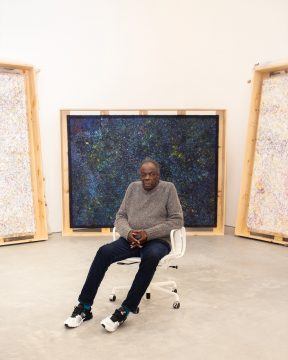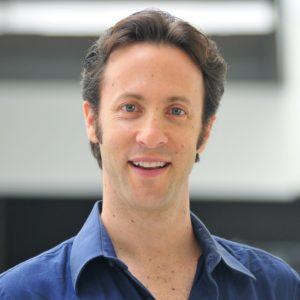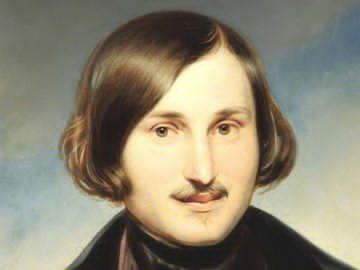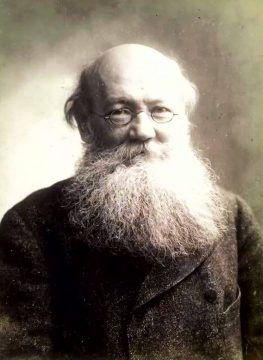Category: Recommended Reading
Sun-Powered Chemistry Can Turn Carbon Dioxide into Common Materials
From News Opener:
 The manufacture of many chemicals important to human health and comfort consumes fossil fuels, thereby contributing to extractive processes, carbon dioxide emissions and climate change. A new approach employs sunlight to convert waste carbon dioxide into these needed chemicals, potentially reducing emissions in two ways: by using the unwanted gas as a raw material and sunlight, not fossil fuels, as the source of energy needed for production. This process is becoming increasingly feasible thanks to advances in sunlight-activated catalysts, or photocatalysts. In recent years investigators have developed photocatalysts that break the resistant double bond between carbon and oxygen in carbon dioxide. This is a critical first step in creating “solar” refineries that produce useful compounds from the waste gas—including “platform” molecules that can serve as raw materials for the synthesis of such varied products as medicines, detergents, fertilizers and textiles.
The manufacture of many chemicals important to human health and comfort consumes fossil fuels, thereby contributing to extractive processes, carbon dioxide emissions and climate change. A new approach employs sunlight to convert waste carbon dioxide into these needed chemicals, potentially reducing emissions in two ways: by using the unwanted gas as a raw material and sunlight, not fossil fuels, as the source of energy needed for production. This process is becoming increasingly feasible thanks to advances in sunlight-activated catalysts, or photocatalysts. In recent years investigators have developed photocatalysts that break the resistant double bond between carbon and oxygen in carbon dioxide. This is a critical first step in creating “solar” refineries that produce useful compounds from the waste gas—including “platform” molecules that can serve as raw materials for the synthesis of such varied products as medicines, detergents, fertilizers and textiles.
…The advances occurring in the sunlight-driven conversion of carbon dioxide into chemicals are sure to be commercialized and further developed by start-ups or other companies in the coming years. Then the chemical industry—by transforming what today is waste carbon dioxide into valuable products—will move a step closer to becoming part of a true, waste-free, circular economy, as well as helping to make the goal of generating negative emissions a reality.
More here.
How to Read Sam Gilliam’s Formalism
Peter Schjeldahl at The New Yorker:
 The show’s main news is in sculpture: there are several small pyramids and one immense one, all raised slightly off the floor and built of innumerable horizontal sheets of laminated plywood with regularly spaced bands of aluminum. Gorgeously dyed in sumptuous color—bringing out and celebrating the textures of the wood grain—the blunt structures radiate like light sources. Do they suggest late entries in the repertoire of Minimalism? They do, but with a sense of re-starting the aesthetic from scratch—getting it right, even, at long last. The pieces play a role in another of the show’s revelations: a series of large (up to twenty feet wide) neo- or post- or, let’s say, para-color-field paintings that owe the ruggedness of their paint surfaces to incorporations of leftover pyramid sawdust. Bevelled edges flirt with object-ness, making the works seem fat material presentations, protuberant from walls, rather than pictures. But, as always with Gilliam, paint wins. Thick grounds in white or black are crazed with specks, splotches, and occasional dragged strokes of varied color. While you feel the weight of the wooden supports, your gaze loses itself in something like starry skies: dizzying impressions of infinite distance in tension with the dense grounds, which are complicated by tiny bits of collaged and overpainted wooden squares. Registering the jittery chromatic harmonies and occasional underlying structures—ghosts of geometry—takes time. Seemingly decorative at first glance, the paintings turn inexhaustibly absorbing and exciting when contemplated. Like everything else in this show of an artist who is old in years, they feel defiantly brand spanking new.
The show’s main news is in sculpture: there are several small pyramids and one immense one, all raised slightly off the floor and built of innumerable horizontal sheets of laminated plywood with regularly spaced bands of aluminum. Gorgeously dyed in sumptuous color—bringing out and celebrating the textures of the wood grain—the blunt structures radiate like light sources. Do they suggest late entries in the repertoire of Minimalism? They do, but with a sense of re-starting the aesthetic from scratch—getting it right, even, at long last. The pieces play a role in another of the show’s revelations: a series of large (up to twenty feet wide) neo- or post- or, let’s say, para-color-field paintings that owe the ruggedness of their paint surfaces to incorporations of leftover pyramid sawdust. Bevelled edges flirt with object-ness, making the works seem fat material presentations, protuberant from walls, rather than pictures. But, as always with Gilliam, paint wins. Thick grounds in white or black are crazed with specks, splotches, and occasional dragged strokes of varied color. While you feel the weight of the wooden supports, your gaze loses itself in something like starry skies: dizzying impressions of infinite distance in tension with the dense grounds, which are complicated by tiny bits of collaged and overpainted wooden squares. Registering the jittery chromatic harmonies and occasional underlying structures—ghosts of geometry—takes time. Seemingly decorative at first glance, the paintings turn inexhaustibly absorbing and exciting when contemplated. Like everything else in this show of an artist who is old in years, they feel defiantly brand spanking new.
more here.
To Everest in a Biplane
Dan Richards at Literary Review:
 The Moth and the Mountain is a strange book. Several times this past month I’ve told friends about it, describing its central figure, Maurice Wilson: war hero, heartbreaker, daydreamer, globetrotter, irrepressible adventurer, the man who, in 1932, dreamed up a scheme to fly the moth of the title (a de Havilland biplane) on to Mount Everest, before hopping out and shinning up to the summit. My wide-eyed friends would blink and ask, ‘And this is a real story?’ and I’d nod, and then they’d ask the terminal question, ‘What happened next?’
The Moth and the Mountain is a strange book. Several times this past month I’ve told friends about it, describing its central figure, Maurice Wilson: war hero, heartbreaker, daydreamer, globetrotter, irrepressible adventurer, the man who, in 1932, dreamed up a scheme to fly the moth of the title (a de Havilland biplane) on to Mount Everest, before hopping out and shinning up to the summit. My wide-eyed friends would blink and ask, ‘And this is a real story?’ and I’d nod, and then they’d ask the terminal question, ‘What happened next?’
Praise is due to Ed Caesar for managing to tell this tale so well, because the sheer madness of Wilson’s life would surely have thrown off all but the most sure-footed biographer. Caesar sets about it with fantastic energy and makes use of a marvellous collage of letters, diary entries, poetry, telegrams, interviews and archival iced gems.
more here.
Stacey Abrams: Georgia’s political heroine … and romance author
Alison Flood in The Guardian:
 Stacey Abrams is the former Georgia state house minority leader, whose fierce fight for Georgians’ right to vote has been credited for potentially handing the state to the Democrats for the first time in 28 years. But Abrams has another identity: the novelist Selena Montgomery, a romance and thriller writer who has sold more than 100,000 copies of her eight novels.
Stacey Abrams is the former Georgia state house minority leader, whose fierce fight for Georgians’ right to vote has been credited for potentially handing the state to the Democrats for the first time in 28 years. But Abrams has another identity: the novelist Selena Montgomery, a romance and thriller writer who has sold more than 100,000 copies of her eight novels.
Abrams wrote her first novel during her third year at Yale Law School, inspired after reading her ex-boyfriend’s PhD dissertation in chemical physics. She had wanted to write a spy novel: “For me, for other young black girls, I wanted to write books that showed them to be as adventurous and attractive as any white woman,” she wrote in her memoir Minority Leader. But after being told repeatedly by editors that women don’t read spy novels, and that men don’t read spy novels by women, she made her spies fall in love. Rules of Engagement, her debut, was published in 2001, and sees temperatures flare as covert operative Raleigh partners with the handsome Adam Grayson to infiltrate a terrorist group that has stolen deadly environmental technology.
Abrams published the novel under a pen name “to separate my fiction from more academic publications on tax policy”. Seven more novels would follow, including Never Tell, which sees criminal psychologist Dr Erin Abbott take on a New Orleans serial killer with the help of journalist Gabriel Moss; Hidden Sins, which follows Mara Reed as she reunites with the scientist whose heart she once broke in her hometown; and Reckless, in which top lawyer Kell Jameson faces her past when the head of her childhood orphanage is accused of murder.
More here.
Tuesday, November 10, 2020
Dave Grohl, 10-Year-Old Nandi Bushell and One Very Epic Drum Battle
Jeremy Gordon in The New York Times:
 You didn’t need to know every note of Nirvana’s angst-rock classic “In Bloom” to marvel at the spectacle of a little girl drumming along to the song in perfect synchronization last November, her face scrawled over with joy and passion. The internet is an open playing field for regular people performing impressive feats, and over a couple of years, Nandi Bushell, a resident of Ipswich, England, had attracted a solid audience by expressively covering famous songs by a genre-diverse range of artists including the White Stripes, Billie Eilish and Anderson .Paak. Sometimes her father, John, and brother, Thomas, accompanied her, but Bushell was the star, combining technical virtuosity with bright-eyed showmanship (and some enthusiastic yelling).
You didn’t need to know every note of Nirvana’s angst-rock classic “In Bloom” to marvel at the spectacle of a little girl drumming along to the song in perfect synchronization last November, her face scrawled over with joy and passion. The internet is an open playing field for regular people performing impressive feats, and over a couple of years, Nandi Bushell, a resident of Ipswich, England, had attracted a solid audience by expressively covering famous songs by a genre-diverse range of artists including the White Stripes, Billie Eilish and Anderson .Paak. Sometimes her father, John, and brother, Thomas, accompanied her, but Bushell was the star, combining technical virtuosity with bright-eyed showmanship (and some enthusiastic yelling).
The sight of Bushell wailing away immediately impressed Dave Grohl, the Foo Fighters frontman and former Nirvana drummer who played “In Bloom” on the band’s 1991 breakthrough album, “Nevermind.” Grohl is not a social media user, and he only learned about the viral clip when the album’s producer, Butch Vig, sent it to him. “I watched it in amazement, not only because she was nailing all of the parts, but the way that she would scream when she did her drum rolls,” Grohl said in a recent video interview. “There’s something about seeing the joy and energy of a kid in love with an instrument. She just seemed like a force of nature.”
More here.
Wagnerism: Art and Politics in the Shadow of Music
Charlie Tyson in The Hedgehog Review:
 A few years ago, I was listening to a recording of the Tannhäuser overture on YouTube. Whether out of glazed torpor or instinctive masochism, I found myself scrolling down to read the comments.
A few years ago, I was listening to a recording of the Tannhäuser overture on YouTube. Whether out of glazed torpor or instinctive masochism, I found myself scrolling down to read the comments.
Now, the adage “Don’t read the comments” is, as ever, a wise rule—though increasingly difficult to implement as our digital public sphere turns into one large acidic comments section. But the corner of YouTube devoted to sharing recordings and performances of art music and opera is a gentle, sometimes genteel, subculture. Go to nearly any video of Bach, Schubert, Vivaldi, or Mozart, and you will find hundreds of comments that would strike any jaded young online American as ludicrously heartwarming. Classical Music Land is an unlikely utopia where listener-viewers from around the world, writing in dozens of languages, passionately and unironically extol the glory of music and the beauty of the human spirit.
A rather different community had assembled around Tannhäuser. “Hail our people, hail Wagner!” one commenter cheered. “Brothers…we must defend Europe!” sounded another. “A lot of Bad Goys on here,” a third remarked. Perhaps I shouldn’t have been surprised. But when you are journeying through Classical Music Land and end up at a Nazi convention, you have to ask whether you need a new map.
More here.
Sean Carroll’s Mindscape Podcast: David Eagleman on Tapping Into the Livewired Brain
Sean Carroll in Preposterous Universe:
 Imagine you were locked in a sealed room, with no way to access the outside world but a few screens showing a view of what’s outside. Seems scary and limited, but that’s essentially the situation that our brains find themselves in — locked in our skulls, with only the limited information from a few unreliable sensory modalities to tell them what’s going on inside. Neuroscientist David Eagleman has long been interested in how the brain processes that sensory input, and also how we might train it to learn completely new ways of accessing the outside world, with important ramifications for virtual reality and novel brain/computer interface techniques.
Imagine you were locked in a sealed room, with no way to access the outside world but a few screens showing a view of what’s outside. Seems scary and limited, but that’s essentially the situation that our brains find themselves in — locked in our skulls, with only the limited information from a few unreliable sensory modalities to tell them what’s going on inside. Neuroscientist David Eagleman has long been interested in how the brain processes that sensory input, and also how we might train it to learn completely new ways of accessing the outside world, with important ramifications for virtual reality and novel brain/computer interface techniques.
More here.
The Agony of Victory, The Thrill of Defeat
Scott F. Aikin and Robert B. Talisse in Daily Nous:
 The election of Joe Biden and Kamala Harris comes as an enormous relief. Our democracy has been saved from a second Trump term, and arguably saved as such. Yet the outcome falls short of expressing a clear rebuke of Trumpism. The GOP now has a choice: take the defeat to heart and rebrand, or double down on the Trumpist program.
The election of Joe Biden and Kamala Harris comes as an enormous relief. Our democracy has been saved from a second Trump term, and arguably saved as such. Yet the outcome falls short of expressing a clear rebuke of Trumpism. The GOP now has a choice: take the defeat to heart and rebrand, or double down on the Trumpist program.
Of course, our hope is that the GOP will take the former course. Yet we expect it to further embrace Trumpism with all of its resentment, contempt, and distrust of a significant portion American citizenry. Why? Well, as we see it, the core of Trumpism is the view that a considerable portion of the American citizenry isn’t properly American. Indeed, it is the view that more than half of the public is against America and in some sense actively plotting its downfall. This is why, for at least the past four years, the GOP has grown more explicitly committed to the idea that political power is to be wielded almost exclusively for the sake of its own expansion. That’s how one governs when one sees one’s opponents as enemies of democracy itself. When the other side is out to dismantle democracy, no electoral defeat of one’s own side could be legitimately democratic. Trump was elected not because he came up with this idea and then sold it to the citizens, but rather because he gave voice to that sentiment. It antedated his candidacy and will persist after his Presidency. Regardless of the election returns, Trump’s defeat appears to his followers as a defeat of America itself.
More here. [Scroll up at Daily Nous to see other philosophers’ responses to the election results.]
Robert Pinsky reads “Incantation” by Czeslaw Milosz
Text here.
Tuesday Poem
Border
I’m going to move ahead.
Behind me my whole family is calling,
My child is pulling my sari-end,
My husband stands blocking the door,
But I will go.
There’s nothing ahead but a river.
I will cross.
I know how to swim,
but they won’t let me swim, won’t let me cross.
There’s nothing on the other side of the river
but a vast expanse of fields,
But I’ll touch this emptiness once
and run against the wind, whose whooshing sound
makes me want to dance.
I’ll dance someday
and then return.
I’ve not played keep-away for years
as I did in childhood.
I’ll raise a great commotion playing keep-away someday
and then return.
For years I haven’t cried with my head
in the lap of solitude.
I’ll cry to my heart’s content someday
and then return.
There’s nothing ahead but a river,
and I know how to swim.
Why shouldn’t I go?
I’ll go.
by Taslima Nasrin
also here and here
What Pfizer’s landmark COVID vaccine results mean for the pandemic
Ewen Callaway in Nature:
 It works! Scientists have greeted with cautious optimism a press-release declaring positive interim results from a coronavirus vaccine trial — the first to report from the final, ‘phase III’ round of human testing. Drug company Pfizer’s announcement on 9 November offers the first compelling evidence that a vaccine can prevent COVID-19 — and bodes well for other COVID-19 vaccines in development. But the information released at this early stage does not answer key questions that will determine whether the Pfizer vaccine, and others like it, can prevent the most severe cases or quell the coronavirus pandemic. “We need to see the data in the end, but that still doesn’t dampen my enthusiasm. This is fantastic,” says Florian Krammer, a virologist at Icahn School of Medicine at Mount Sinai in New York City, who is also one of the trial’s more than 40,000 participants. “I hope I’m not in the placebo group.”
It works! Scientists have greeted with cautious optimism a press-release declaring positive interim results from a coronavirus vaccine trial — the first to report from the final, ‘phase III’ round of human testing. Drug company Pfizer’s announcement on 9 November offers the first compelling evidence that a vaccine can prevent COVID-19 — and bodes well for other COVID-19 vaccines in development. But the information released at this early stage does not answer key questions that will determine whether the Pfizer vaccine, and others like it, can prevent the most severe cases or quell the coronavirus pandemic. “We need to see the data in the end, but that still doesn’t dampen my enthusiasm. This is fantastic,” says Florian Krammer, a virologist at Icahn School of Medicine at Mount Sinai in New York City, who is also one of the trial’s more than 40,000 participants. “I hope I’m not in the placebo group.”
The vaccine, which is being co-developed by BioNtech in Mainz, Germany, consists of molecular instructions — in the form of messenger RNA (mRNA) — for human cells to make the coronavirus’ spike protein, the immune systems’ key target for coronaviruses. The two-dose vaccine showed promise in animal studies and early-stage clinical trials. But the only way to know if the vaccine works is to give it to large numbers of people, and then follow them over weeks or months to see if they become infected and show disease symptoms. These results are compared to those for a group of participants who are given a placebo. In the press release, Pfizer and BioNtech said that they had identified 94 cases of COVID-19 among 43,538 trial participants. The companies did not indicate how many of those cases were in the placebo group or among those that got the vaccine. But they said that the split of cases between the groups suggested that the vaccine was more than 90% effective at preventing disease, when measured at least one week after trial participants had received a second vaccine dose, three weeks after the first. The trial will continue until a total of 164 COVID-19 cases are detected, so initial estimates of the vaccines’ effectiveness could change.
More here.
Yevgeny Zamyatin’s Seminal Dystopian Novel
Jacob Howland at The New Criterion:
 Zamyatin is among the few gifted twentieth-century writers who responded to ideological tyranny by poetically integrating mathematical science into a philosophical anthropology. Dostoyevsky’s literary topographies of the soul are the fons et origo of all such endeavors. His Underground Man is suffocated by the totalizing utilitarian calculus of the “normal,” rational, positivistic, and progressive European: 2+2=4 as mathematically infallible social policy. Yet Ivan Karamazov rebels against what his willfully Euclidean mind regards as Christianity’s morally unintelligible response to ultimate matters of human freedom, suffering, and the choice between good and evil. Primo Levi, whose knowledge of chemistry and Dante provided food for his soul and bread for his body at Auschwitz (his scientific training got him an indoor job at the Buna industrial site), created new fusions of science and poetry in If This Is a Man and The Periodic Table. The chemical engineer Vasily Grossman was a master of this sort of literary alchemy; his Life and Fate, a novel centered on the Battle of Stalingrad, describes the totalitarian social physics of both the Soviet Union and Nazi Germany.
Zamyatin is among the few gifted twentieth-century writers who responded to ideological tyranny by poetically integrating mathematical science into a philosophical anthropology. Dostoyevsky’s literary topographies of the soul are the fons et origo of all such endeavors. His Underground Man is suffocated by the totalizing utilitarian calculus of the “normal,” rational, positivistic, and progressive European: 2+2=4 as mathematically infallible social policy. Yet Ivan Karamazov rebels against what his willfully Euclidean mind regards as Christianity’s morally unintelligible response to ultimate matters of human freedom, suffering, and the choice between good and evil. Primo Levi, whose knowledge of chemistry and Dante provided food for his soul and bread for his body at Auschwitz (his scientific training got him an indoor job at the Buna industrial site), created new fusions of science and poetry in If This Is a Man and The Periodic Table. The chemical engineer Vasily Grossman was a master of this sort of literary alchemy; his Life and Fate, a novel centered on the Battle of Stalingrad, describes the totalitarian social physics of both the Soviet Union and Nazi Germany.
more here.
The Brilliance of Ann Quin
Joshua Cohen at The Paris Review:
 Three is the second of the four brilliant and enigma-ridden novels that Ann Quin published before drowning off the coast of Brighton in 1973 at the age of thirty-seven. The mysterious character S—the absent protagonist or antiheroine hypotenuse of this love-triangle tale—dies in similar fashion … or perhaps she’s stabbed to death by a gang of nameless, faceless men before her body washes up onshore … or perhaps the stabbed dead body that washes up onshore is someone else… It’s difficult to tell. And the telling is difficult, too. And I would submit that it’s precisely these difficulties that make this gory story normal.
Three is the second of the four brilliant and enigma-ridden novels that Ann Quin published before drowning off the coast of Brighton in 1973 at the age of thirty-seven. The mysterious character S—the absent protagonist or antiheroine hypotenuse of this love-triangle tale—dies in similar fashion … or perhaps she’s stabbed to death by a gang of nameless, faceless men before her body washes up onshore … or perhaps the stabbed dead body that washes up onshore is someone else… It’s difficult to tell. And the telling is difficult, too. And I would submit that it’s precisely these difficulties that make this gory story normal.
A British married couple, a dyad of faux-boho normies, provide the other two points of Three’s ménage. Their names are Ruth (sometimes Ruthey, sometimes just R) and Leonard (sometimes Leon, sometimes just L).
more here.
Joy Harjo
Sunday, November 8, 2020
A new translation captures the oddity of Russia’s most baffling comic writer: Nikolai Gogol
Gary Saul Morson in the New York Review of Books:
 Nikolai Gogol (1809–1852), Russia’s greatest comic writer, thoroughly baffled his contemporaries. Strange, peculiar, wacky, weird, bizarre, and other words indicating enigmatic oddity recur in descriptions of him. “What an intelligent, queer, and sick creature!” remarked Turgenev; another major prose writer, Sergey Aksakov, referred to the “unintelligible strangeness of his spirit.” When Gogol died, the poet Pyotr Vyazemsky sighed, “Your life was an enigma, so is today your death.”
Nikolai Gogol (1809–1852), Russia’s greatest comic writer, thoroughly baffled his contemporaries. Strange, peculiar, wacky, weird, bizarre, and other words indicating enigmatic oddity recur in descriptions of him. “What an intelligent, queer, and sick creature!” remarked Turgenev; another major prose writer, Sergey Aksakov, referred to the “unintelligible strangeness of his spirit.” When Gogol died, the poet Pyotr Vyazemsky sighed, “Your life was an enigma, so is today your death.”
Gogol has remained, in the words of another contemporary, among the world’s most “undeciphered [nerazgadannykh] people.” “To say that Nikolai Gogol is one of the most controversial figures in Russian literature,” Victor Erlich began his classic study of the writer, “is to offer one of the few noncontroversial statements that can legitimately be made about this remarkable writer.” “I am considered a riddle by everyone,” Gogol observed, and he was no less enigmatic to himself. He hoped that his last work, the second part of his masterpiece Dead Souls would solve “the riddle of my existence,” but he recognized that it hadn’t, and so just before he died he burned most of it in a literary auto-da-fé.
More here.
The radical aristocrat who put kindness on a scientific footing
Lydia Syson in Aeon:
 Five years had passed since Czar Alexander II promised the emancipation of the serfs. Trusting in a map drawn on bark with the point of a knife by a Tungus hunter, three Russian scientists set out to explore an area of trackless mountain wilderness stretching across eastern Siberia. Their mission was to find a direct passage between the gold mines of the river Lena and Transbaikalia. Their discoveries would transform understanding of the geography of northern Asia, opening up the route eventually followed by the Trans-Manchurian Railway. For one explorer, now better known as an anarchist than a scientist, this expedition was also the start of a long journey towards a new articulation of evolution and the strongest possible argument for a social revolution.
Five years had passed since Czar Alexander II promised the emancipation of the serfs. Trusting in a map drawn on bark with the point of a knife by a Tungus hunter, three Russian scientists set out to explore an area of trackless mountain wilderness stretching across eastern Siberia. Their mission was to find a direct passage between the gold mines of the river Lena and Transbaikalia. Their discoveries would transform understanding of the geography of northern Asia, opening up the route eventually followed by the Trans-Manchurian Railway. For one explorer, now better known as an anarchist than a scientist, this expedition was also the start of a long journey towards a new articulation of evolution and the strongest possible argument for a social revolution.
Prince Peter Kropotkin, the aristocratic graduate of an elite Russian military academy, travelled in 1866 with his zoologist friend Ivan Poliakov and a topographer called Maskinski. Boat and horseback took them to the Tikono-Zadonsk gold mine. From there, they continued with 10 Cossacks, 50 horses carrying three months’ supply of food, and an old Yukaghir nomad guide who’d made the journey 20 years earlier.
Kropotkin and Poliakov – enthusiastic, curious and well-read young men in their 20s – were fired by the prospect of finding evidence of that defining factor of evolution set out by Charles Darwin in On the Origin of Species (1859): competition. They were disappointed.
More here.
Alex Rosenberg corresponds with Daniel Dennett: On Purpose
Alex Rosenberg and Daniel Dennett in Letter:
 Dear Dan,
Dear Dan,
I have no idea how much interest there might be about disagreements among naturalists between the optimistic ones like you and the pessimistic ones like me. But I know I’d like to be convinced I’m mistaken. And you are probably the philosopher most likely to convince me.
I think we both see the project of naturalism in philosophy as that of squaring science with as much as we can of what Wilfred Sellers called the manifest image—the informed non-scientists’ view of reality and of our knowledge of it, of human thought and action, ethical norms and values. Disenchanted naturalists like me think that we won’t succeed at this project, that natural science undermines most of what people think about these matters, even what scientists themselves believe, outside of their narrow areas of special expertise.
More here.
Welcome the Trump Voters Back
Justin E. H. Smith in his Substack Newsletter:
 You can do whatever you want with your morals, forgive people or not. But your duties as a citizen are somewhat different than the duties you might have as, say, a Christian (the kind who strives to follow the gospel), and here forgiveness is not so much what is required as, simply, recognition of a common plight. This civic virtue overlaps, admittedly, with the moral; it is difficult to articulate it in terms that do not come across as moralising, and certainly it would be an impediment to its realisation to articulate it in the bare terms of calculative strategy. In France it is traditionally articulated in terms of fraternité, which seems to strike just the right note between strategy and moralising. We need to hold things together somehow; in a real family unit this might have to pass through an overtly moral gesture of forgiveness, but in a polity what we should perhaps expect is that people aspire at least to a recognition of their fellow citizens through a lens that represents them as brothers and sisters.
You can do whatever you want with your morals, forgive people or not. But your duties as a citizen are somewhat different than the duties you might have as, say, a Christian (the kind who strives to follow the gospel), and here forgiveness is not so much what is required as, simply, recognition of a common plight. This civic virtue overlaps, admittedly, with the moral; it is difficult to articulate it in terms that do not come across as moralising, and certainly it would be an impediment to its realisation to articulate it in the bare terms of calculative strategy. In France it is traditionally articulated in terms of fraternité, which seems to strike just the right note between strategy and moralising. We need to hold things together somehow; in a real family unit this might have to pass through an overtly moral gesture of forgiveness, but in a polity what we should perhaps expect is that people aspire at least to a recognition of their fellow citizens through a lens that represents them as brothers and sisters.
Even after the defeat of Nazi Germany, the Allied forces understood that de-Nazification meant, first of all, punishing the leaders of the movement, and, second of all, getting the masses of the German people oriented towards an ideal of civic belonging more attractive than Nazism.
More here.
Alexandria Ocasio-Cortez ends truce by warning ‘incompetent’ Democratic party
Tom McCarthy in The Guardian:
 Alexandria Ocasio-Cortez has criticised the Democratic party for incompetence in a no-holds-barred, post-election interview with the New York Times, warning that if the Biden administration does not put progressives in top positions, the party would lose big in the 2022 midterm elections. Signaling that the internal moratorium in place while the Democrats worked to defeat Donald Trump was over, the leftwing New York representative sharply rejected the notion advanced by some Democrats that progressive messaging around the Movement for Black Lives and the Green New Deal led to the party’s loss of congressional seats in last week’s election. The real problem, said Ocasio-Cortez, was that the party lacked “core competencies” to run campaigns.
Alexandria Ocasio-Cortez has criticised the Democratic party for incompetence in a no-holds-barred, post-election interview with the New York Times, warning that if the Biden administration does not put progressives in top positions, the party would lose big in the 2022 midterm elections. Signaling that the internal moratorium in place while the Democrats worked to defeat Donald Trump was over, the leftwing New York representative sharply rejected the notion advanced by some Democrats that progressive messaging around the Movement for Black Lives and the Green New Deal led to the party’s loss of congressional seats in last week’s election. The real problem, said Ocasio-Cortez, was that the party lacked “core competencies” to run campaigns.
“There’s a reason Barack Obama built an entire national campaign apparatus outside of the Democratic National Committee,” she told the Times’ Astead Herndon. “And there’s a reason that when he didn’t activate or continue that, we lost House majorities. Because the party – in and of itself – does not have the core competencies, and no amount of money is going to fix that.” Ocasio-Cortez, who defeated a longtime Democratic politician in 2018 and who won re-election in her Bronx district by more than 50 points, endorsed the Vermont senator, Bernie Sanders, over Joe Biden in the Democratic presidential primary.
More here.
